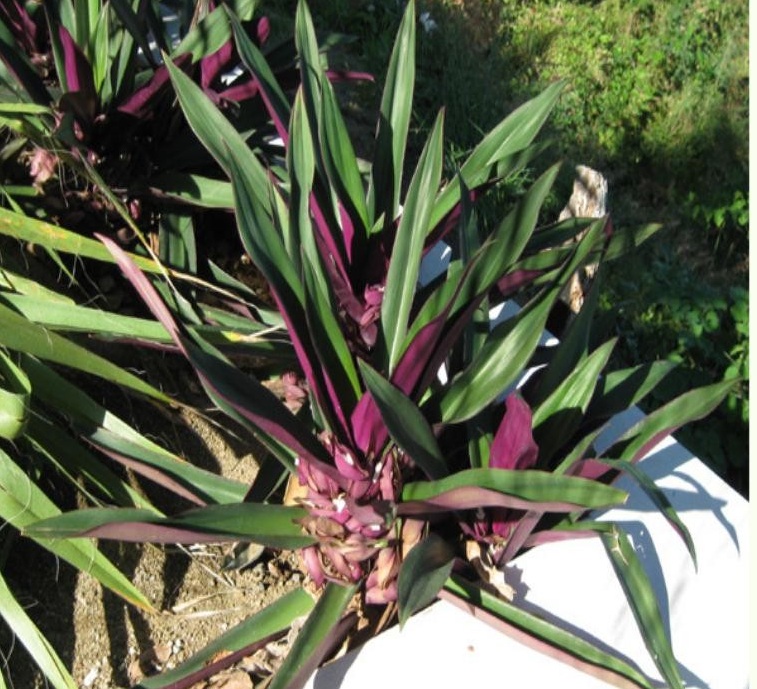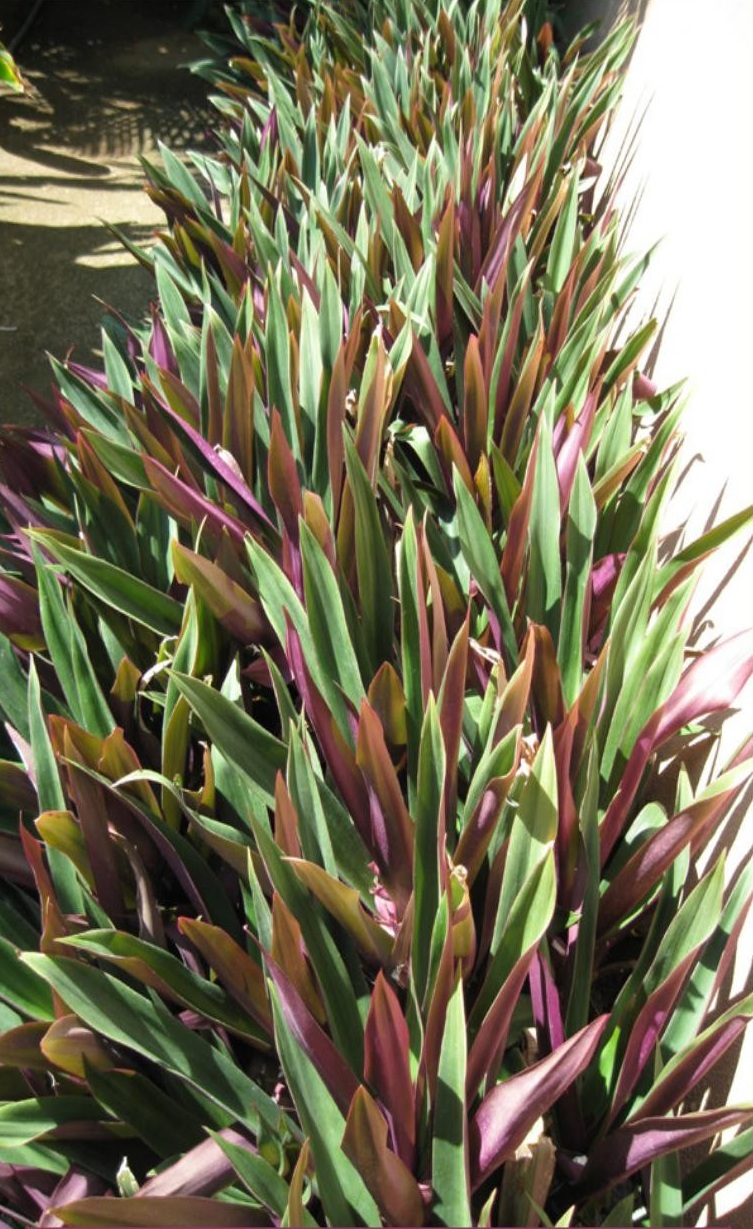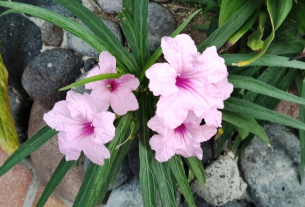By Tommy Clarkson from the May 2010 Edition
Tradescantia pallida ‘Purpea’, Rhoea spathacea, or Rhoea discolour)
Family: Commelinaceae
Also known as Moses-in-the-Boat, Moses in the Cradle and
Moses in the Basket and Boatlily
(Note: The plant to be discussed below, should not be confused with Acanthus molli, or Acanthus spinosus Bear’s Breeches or the Scolymus hispanicus Spanish Oyster Plant or with the four feet tall, grass like Tragopogon porrifolius Salsify that is a member of the Asteraceae (sunflower) family and has an edible root with the flavor of oysters. Each of these are sometimes called Oyster Plant as well. And, yes, I agree, it’s all, often, quite confusing and I regularly question if I’ve even the remotest of handles on it!)

Extremely hardy, the Oyster Plant is almost a ‘plant and forget’ sort of gardening addition
Now let’s be honest. Sometimes we find ourselves needing a solid, stable, “always there for us,” plant. . . just as my wife is to me . . . dependable, patient and capable of taking all of my scatter-brained, multi-directioned and inane nonsense. Such is the Oyster Plant.
Comfortable in sun or shade, this fast grower sometimes seems to thrive on abuse! Each one has a dozen (more or less), erect, broad, sword-shaped leaves that are a dark green on the top and a striking, deep purple underneath. Its flowers aren’t, in all actuality, all that attractive. But they are, in fact, quite interesting being comprised of small, white three-petaled blooms, all crowded together in boat-shaped bracts, down among the leaves.

Drench them in water or forget to do so for protracted periods this stalwart plant generally doesn’t seem to mind. An intriguing, strong spirited character, regardless of our lack of attention, it just goes on about doing its job. A fast grower, it makes a great ground cover, potted plant for the terrace or tropical flower bed border/edging plant. The short version of it is that the Oyster Plant is very hardy and quite easy to grow!
It propagates, on its own, via its roots or wind blown seeds or, by us, through cuttings.This attractive succulent can grow up to two feet high but there is also a dwarf variety called by some Tradescantia spathacea that is utilized for landscaping tasks. Beyond these, there are also varieties that are solid green or variegated foliage of striped red and yellowish green.
Download the full edition or view it online
—
Tommy Clarkson is a bit of a renaissance man. He’s lived and worked in locales as disparate as the 1.2 square mile island of Kwajalein to war-torn Iraq, from aboard he and Patty’s boat berthed out of Sea Bright, NJ to Thailand, Germany, Hawaii and Viet Nam; He’s taught classes and courses on creative writing and mass communications from the elementary grades to graduate level; He’s spoken to a wide array of meetings, conferences and assemblages on topics as varied as Buddhism, strategic marketing and tropical plants; In the latter category he and Patty’s recently book, “The Civilized Jungle” – written for the lay gardener – has been heralded as “the best tropical plant book in the last ten years”; And, according to Trip Advisor, their spectacular tropical creation – Ola Brisa Gardens – is the “Number One Tour destination in Manzanillo”.




You must be logged in to post a comment.